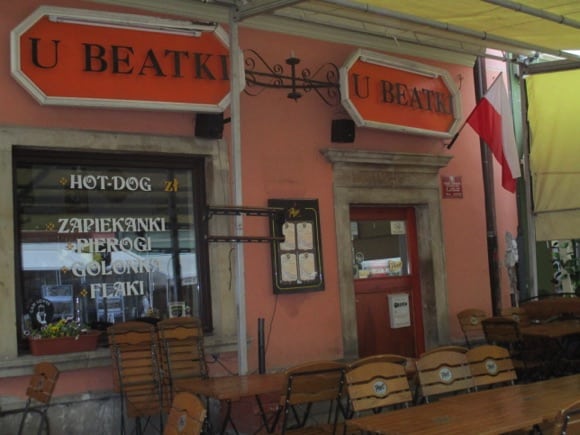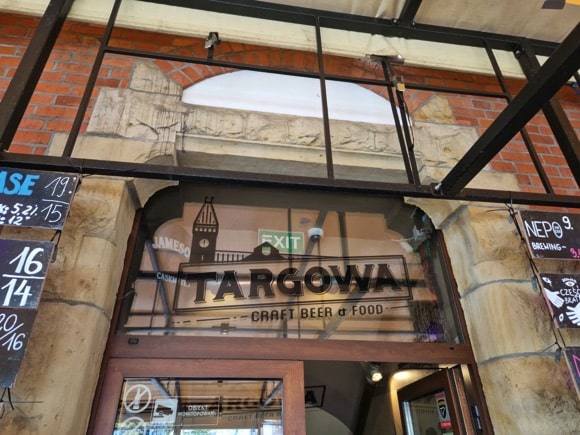Teams, tales and tips – a guide to the local game
Wealthy Wrocław built the most impressive, and biggest, of Poland’s stadiums for Euro 2012, the Stadion Miejski, out by the ring road on the city’s far north-western outskirts. Now called the Tarczyński Arena Wrocław after a local meat conglomerate, this is the home of twice Polish champions Śląsk Wrocław, as well as a regular stage for international fixtures.
Wales and Bosnia both played Nations League games here in recent seasons, while nomadic Ukraine chose this 45,000-seater for their Euro qualifier with England in September 2023. The stadium has also been chosen to host the Europa Conference League final in 2025.
The stadium provides Wrocław, capital of Silesia (‘Śląsk’), with a sporting showcase for the first time since the Olympic Stadium was opened in the late 1920s. Renovated by the Nazis a decade later, the ground holds a special place in German football lore.

In the late 1800s, when football was developing in Central Europe, Wrocław was part of Germany and known to its half a million residents as Breslau. Polish citizens only numbered a few thousand, although a policy of Germanisation since the creation of a single German state in 1871 had reduced the number of ethnic Poles willing to reveal their nationality to census takers.
The first public football game in Breslau took place on September 6, 1892. This gave rise to the city’s first club, the first in Silesia, in fact, FC Breslau. Winners of the inaugural three-team local championship in 1903, beating Blitz Breslau and Schlesien (‘Silesia’) Breslau, the black-and-whites were based at the Sportpark Grüneiche.
Remarkably, this still exists as Intakus Park, or Stadion Ślęzy Wrocław after the city’s oldest Polish club who played here in the 1950s. It sits beside Wrocław Zoo on the banks of the Oder in the east of town. Originally a velodrome, it served local cycling clubs, including Blitz, whose football team was one of the original 86 founding members of the German FA.

Formed as an offshoot of Blitz in 1901, Schlesien Breslau won the next four titles, by which time they could take part in the South-East German Championship, claiming this first regional championship in 1907. Renamed VfR 1897 Breslau, the former Blitz, won the following season and took part in the All-German Championship finals in 1908.
While no team from Breslau lifted a national title, Vereinigte Breslauer Sportfreunde, founded in 1904 and later run by prominent Jewish art collector Leo Lewin, took part in seven all-Germany finals before 1933. Renamed Verein Breslauer Sportfreunde after a gambling scandal, the club welcomed German international Camillo Ugi in 1912, the same year that he starred for Germany in their record 16-0 win over Russia at the Stockholm Olympics. A cinematograph obsessive, Ugi, who won an early German title with VfB Leipzig, was lured to Breslau by the promise of his own workshop.
Lewin’s textile company providing materials for the German Army during World War I, the VBS owner was awash with money before football started up again in 1919, allowing his club to claim four more regional titles and make the national semi-finals in 1920.

Dominating the regional scene that decade, VBS were gradually superseded by Breslauer SC 08 as it became harder and harder for Lewin to operate. He eventually fled Germany for England in the 1930s.
Based at Roonstraße, today the Aleja Pracy in Grabiszyn south-west of town, Breslauer SC 08 were typified by forward Fritz Blaschke. Transferred from VBS in 1924, Breslau-born Blaschke was the hero of BSC’s 4-3 win over Bayern Munich in the quarter finals of the national play-offs. A crowd of 12,000 saw him score a hat-trick in the quarter-final clash at the Sportpark Grüneiche, though BSC would then fail to reach the final.
Until 1937, this would be the most significant game ever played in Breslau. Then, two years before the war, Germany’s national team, probably the best until the total football of the early 1970s, swept aside Denmark 8-0 here, a display of football so complete the side went down in history as the Breslau Eleven. Spearheaded by a forward line from Schalke, the side featured no local players but the performance was acclaimed by 40,000 at what was then the Hermann-Göring Stadion.

Few cities changed their identity as dramatically or as comprehensively as Wrocław after 1945. German citizens – including footballer Fritz Blaschke – were deported across the new border, while Poles arrived in significant numbers from the Soviet Union, particularly Lviv, now part of Ukraine.
In the rush to give the city a Polish population and character, the sports club 1 KS Ślęza Wrocław was formed in June 1945, only weeks after the Siege had ended. Ślęza managed to field 11 players for their first match that summer – though the details remain scant, it hardly matters. The fact that there was any organised entertainment at all would appear to be miraculous.
Though Ślęza, now based on Kłokoczyce on Wrocław’s north-western outskirts, have rarely risen above the third tier, they remain an emblematic echo of post-war recovery.
Soon after Ślęza were set up, officers from the sapper school posted from Przemyśl set up the Klub Sportowy Pionier in Wrocław, where their work was most needed. In 1947, their club merged with Podchorążak comprised of infantrymen to form what would become Śląsk Wrocław ten years later. Top-flight football eventually arrived in the mid-1960s, domestic silverware and European football a decade later.

Until the opening of the Stadion Miejski, aka Tarczyński Arena, in 2011, Śląsk were based at the Stadion Oporowska, another throwback to the pre-war German era. Also designed by Richard Konwiarz and originally called Am Sauerbrunn, aka Sportpark Gräbschen, this ground in Grabiszyn south-west of town was the home of Breslauer SpVg 02, the Nazi-era successor club of the two dominant forces from the 1920s, Vereinigte Breslauer Sportfreunde and Breslauer SC 08, both dissolved in 1933.
After the war, Śląsk Wrocław moved in, but moved international matches, such as against Liverpool in their debut European season of 1975-76, to the Olimpijski. A crowd of 43,000 watched Śląsk keep the visitors to a 2-1 win on a freezing afternoon in Communist Silesia.
Today, the Oporowska is the club’s training ground, used by the Wrocław-based Czech Republic for Euro 2012. Alongside, the Śląsk Hotel is far smarter today than journalists would have remembered it from half a century ago.
The Stadion Miejski elevated the city to a new level of prominence. Although at European level, Śląsk have welcomed few marquee names to their contemporary home, Poland attract decent crowds for international games here, occasionally surpassing 40,000.

Getting Around
Arriving in town, local transport and timings




Wrocław Airport is 10km (six miles) south-west of the centre. With the closure of the WRO Airport Express, city bus 106 (4.60zł/€1 or 5.20zł/€1.15 including onward journey, every 15mins) is now the only option to reach town by public transport. It terminates at Wrocław Główny (40min journey time), the main train station south of the centre. The stadium is way out to the north-west, with its own train station.
Public transport consists of trams and buses. Tickets are available from machines at stops (cash and card), from newsstands (cash and card) or from machines on board vehicles (card only). A 15min journey is 3.20zł/€0.70, a 24hr pass 15zł /€3.35.
From the airport, Taxi S Class (+48 503 075 683) charge about 90-100zł/€20-€25 into the city centre, 50zł/€12 to the stadium. Free water and WiFi should be available to customers.
Where to Drink
The best pubs and bars for football fans












The main square of Rynek and adjoining one of plac Solny are lined with bars, starting with savvy, contemporary Kombinat, equipped with a TV, and alongside, the somewhat identikit Pub Guinness. One floor above, GinBar lends itself to post-work cocktails.
A few paces across plac Solny by the Town Hall, bare-brick Spiż serves its own beer in historic surroundings. All these have terraces, as has Irish chain Whisky in the Jar over on Rynek. Nearer plac Solny on Ruska, Pod Latarniami feels a clas above with its well-chosen beers, top cocktails and funky decor.
Across Rynek, U Beatki is a real football hangout – Śląsk Wrocław fans meet here before and after matches.









At the northern end of the city centre, American-style Chopper on Kotlarska celebrates biker culture while showing TV sport. Nearer the river, where goods would have arrived for the market hall it occupies, Targowa is a bare-brick shrine to craft beer, best supped in the two-floor interior or out on the spacious terrace.
For Czech beer, your best bet is Česká on the other side of the city centre on Świdnicka, where lagoons of Pilsner Urquell can be accompanied by classic Czech bar snacks or hearty mains. On the same south side of town, the Winners Pub on Pawła Włodkowica, is now a quality steakhouse rather than a sports bar but still shows live action on four TVs and a vast projection screen. It’s also a short walk from the tram for the stadium.
Where to stay
The best hotels for the stadium and city centre








Visit Wroclaw has a limited database of local accommodation. Just over a little stream from the stadium, the ibis budget Wroclaw Stadion offers 122 budget rooms set back from the main road, an easy option of a match night.
You’ll find another ibis, the Wroclaw Centrum, among the cluster of hotels around the station, as well as three-star Sofia right opposite, whose sturdy exterior belies the contemporary rooms within. The next building along, the two-star Piast is similar in style and standard, with underground parking offered.
For something a little classier in the historic centre, the Qubus near the main square lays on a pool, sauna, gym and four-star lodgings. Also on this side of town, by the Galeria Domikańska mall, the Mercure Hotel Centrum, formerly Panorama, offers 151 mid-range rooms, some with Cathedral views, plus a modest spa and gym. Behind the mall, the DoubleTree by Hilton Wroclaw allows guests to use the indoor pool and spa at nearby Holmes Place.





At the more budget end, just over the river in a north-eastern corner of the city centre, affordable WenderEDU comprises singles, doubles and triples in a business centre with 24-hour reception.
Right by the main square on Kiełbaśnicza, the Dwór Polski fills a historic lodging from the 1500s with cosy hospitality – it’s a traditional restaurant, too. Close by, Grand City is more business-like but no less comfortable while the Wyndham, formerly the Sofitel, features a gym, spa and restaurant.
Beside the Royal Palace and City Museum, the stylish Europeum suits those happy to spend a bit more money on their city break. Nearby on Pawła Włodkowica, the PURO promises an urban oasis, seasonal cocktails and contemporary bistro.







